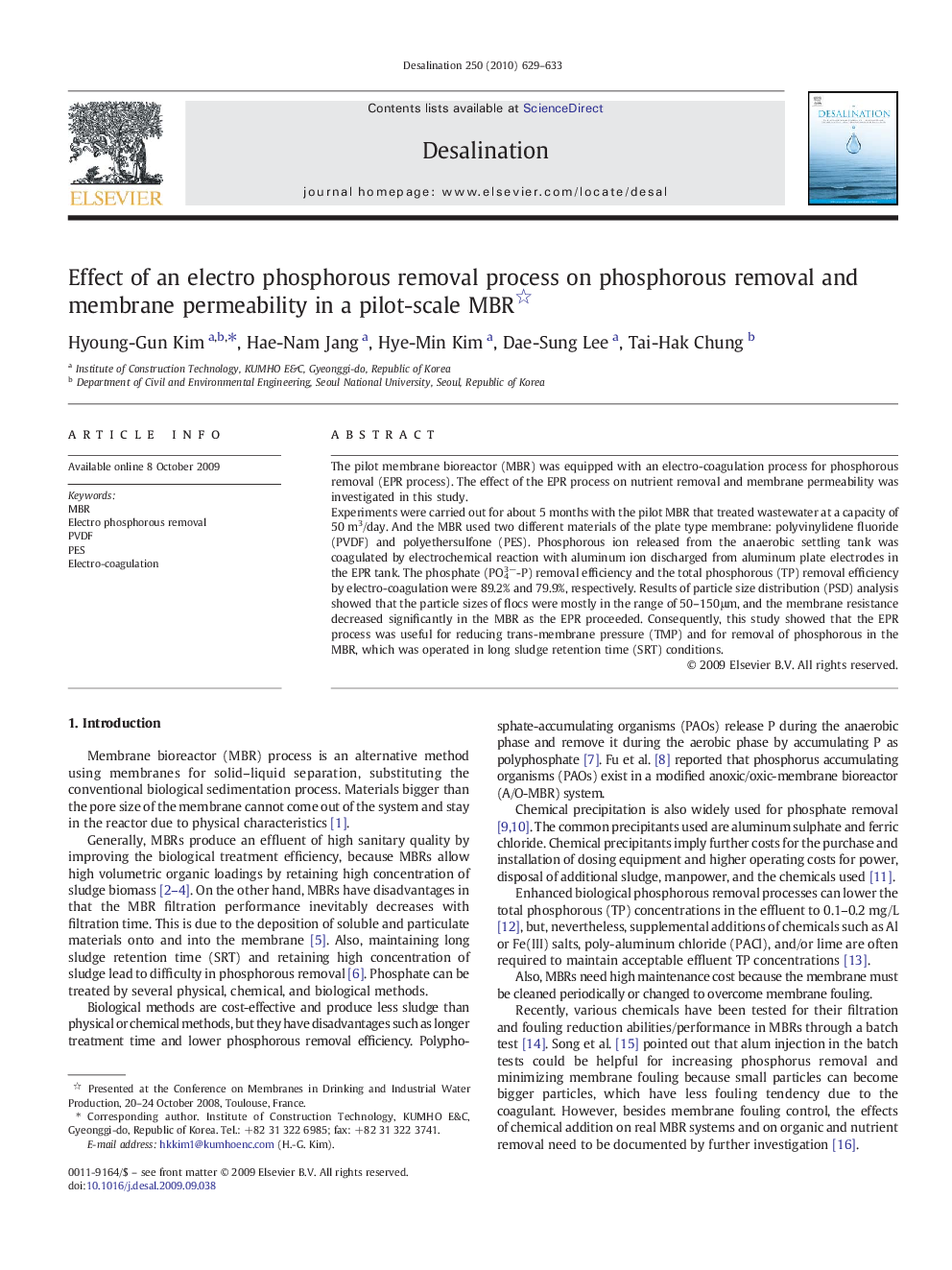| Article ID | Journal | Published Year | Pages | File Type |
|---|---|---|---|---|
| 626061 | Desalination | 2010 | 5 Pages |
Abstract
Experiments were carried out for about 5 months with the pilot MBR that treated wastewater at a capacity of 50 m3/day. And the MBR used two different materials of the plate type membrane: polyvinylidene fluoride (PVDF) and polyethersulfone (PES). Phosphorous ion released from the anaerobic settling tank was coagulated by electrochemical reaction with aluminum ion discharged from aluminum plate electrodes in the EPR tank. The phosphate (PO43â-P) removal efficiency and the total phosphorous (TP) removal efficiency by electro-coagulation were 89.2% and 79.9%, respectively. Results of particle size distribution (PSD) analysis showed that the particle sizes of flocs were mostly in the range of 50-150 μm, and the membrane resistance decreased significantly in the MBR as the EPR proceeded. Consequently, this study showed that the EPR process was useful for reducing trans-membrane pressure (TMP) and for removal of phosphorous in the MBR, which was operated in long sludge retention time (SRT) conditions.
Keywords
Related Topics
Physical Sciences and Engineering
Chemical Engineering
Filtration and Separation
Authors
Hyoung-Gun Kim, Hae-Nam Jang, Hye-Min Kim, Dae-Sung Lee, Tai-Hak Chung,
